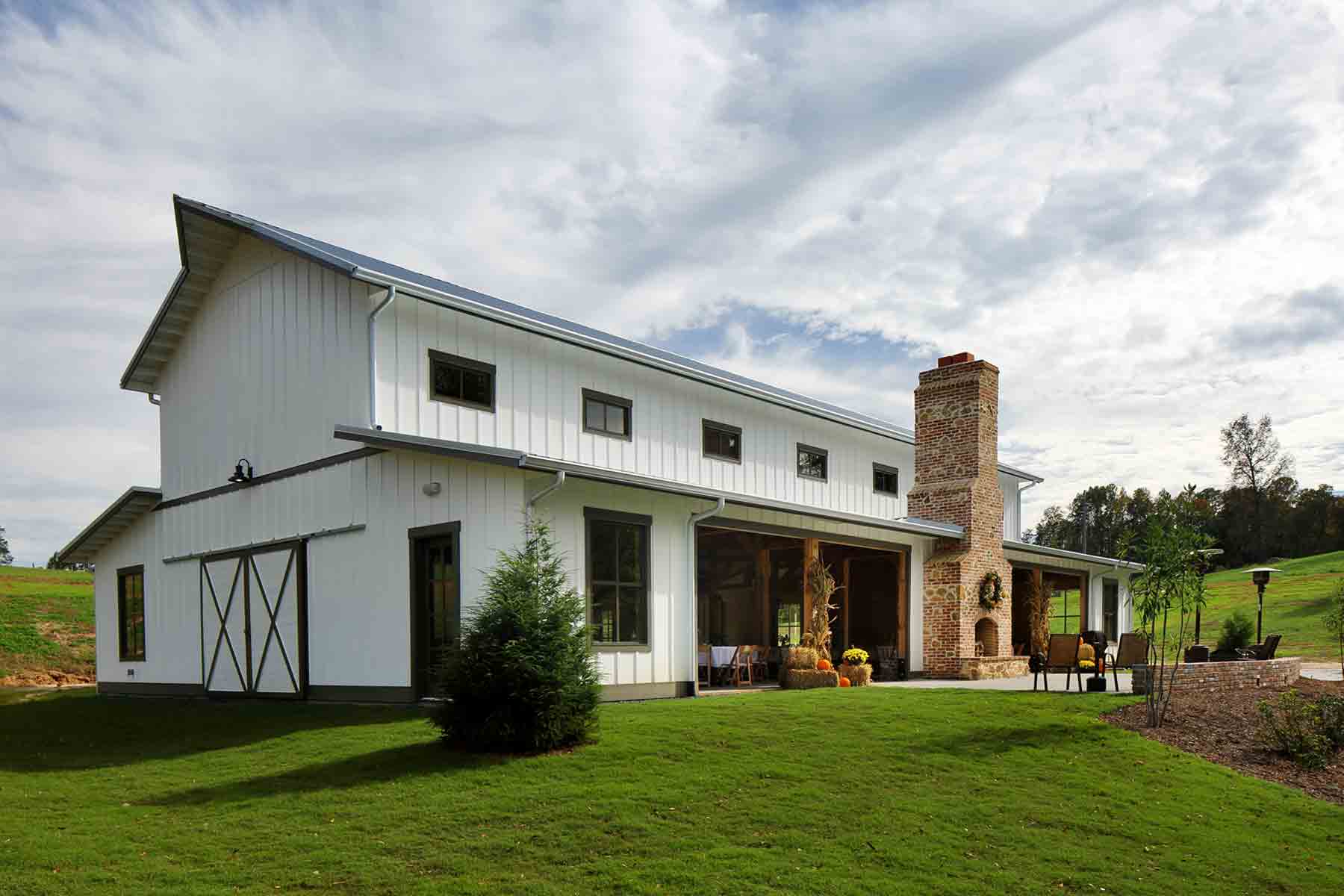Barndominiums, a type of housing that combines the features of a barn and a condominium, have been gaining popularity in recent years. They offer the perfect blend of rustic charm and modern comfort. However, building a barndominium can be quite costly, and it’s essential to know which parts of the project might require the most investment.
When it comes to building a barndominium, the most expensive part is usually the foundation. Since barndominiums require a larger foundation than traditional homes, the cost of excavation, concrete, and labor can quickly add up. However, there are other factors to consider, such as the size of the structure, materials used, and the complexity of the design. In this article, we will explore in detail what makes the foundation of a barndominium the most expensive part of the project and how to minimize the costs.

What Is the Most Expensive Part of Building a Barndominium?
Building a barndominium is a great option for those looking for a unique and affordable housing solution. However, like any construction project, costs can add up quickly. In this article, we will discuss the most expensive parts of building a barndominium and how you can minimize costs.
1. Foundation
The foundation is the most important part of any building and can also be the most expensive. The foundation for a barndominium can cost anywhere from $10,000 to $30,000 depending on the size and type of foundation. The two most popular types of foundation for barndominiums are slab-on-grade and pier and beam.
If you’re looking to save money on the foundation, a pier and beam foundation is generally cheaper than a slab-on-grade foundation. Additionally, using a pre-engineered foundation system can also help minimize costs.
2. Roofing
The roofing system of a barndominium can also be a significant expense. A typical metal roof can cost between $5,000 and $10,000 depending on the size and complexity of the roof. However, investing in a high-quality roofing system can save you money in the long run by reducing maintenance costs and increasing energy efficiency.
3. HVAC System
A heating, ventilation, and air conditioning (HVAC) system is essential to keeping your barndominium comfortable throughout the year. The cost of an HVAC system can vary depending on the size of the building and the type of system you choose. A typical HVAC system can cost between $5,000 and $10,000.
If you’re looking to save money on your HVAC system, consider using a ductless mini-split system. These systems are more energy-efficient and can be installed without the need for ductwork.
4. Plumbing
Plumbing is another essential part of any barndominium. The cost of plumbing can range from $5,000 to $10,000 depending on the size of the building and the complexity of the plumbing system. Investing in high-quality plumbing materials can help minimize maintenance costs in the future.
5. Electrical System
The electrical system of a barndominium is crucial to the safety and functionality of the building. The cost of an electrical system can vary depending on the size of the building and the type of system you choose. A typical electrical system can cost between $5,000 and $10,000.
Investing in energy-efficient lighting and appliances can help reduce your energy costs over time.
6. Interior Finishes
The interior finishes of a barndominium can also add up quickly. This includes flooring, cabinets, countertops, and paint. The cost of interior finishes can vary widely depending on the materials you choose.
To save money on interior finishes, consider using reclaimed or recycled materials. Additionally, doing some of the work yourself can also help reduce costs.
7. Landscaping
Landscaping is often overlooked in the cost of building a barndominium. However, the cost of landscaping can add up quickly. This includes the cost of plants, trees, and hardscaping such as patios and walkways.
To save money on landscaping, consider using native plants that require less maintenance and water. Additionally, doing some of the work yourself can also help reduce costs.
8. Permits and Fees
Permits and fees can also add up quickly when building a barndominium. This includes building permits, impact fees, and utility connection fees. The cost of permits and fees can vary widely depending on your location.
To save money on permits and fees, make sure to do your research ahead of time. Additionally, working with a knowledgeable builder can help ensure that all permits and fees are taken care of.
9. Labor Costs
Labor costs can be a significant expense when building a barndominium. The cost of labor can vary widely depending on your location and the complexity of the project.
To save money on labor costs, consider doing some of the work yourself or hiring a contractor who is willing to work with you on a cost-plus basis.
10. Unexpected Costs
Finally, it’s important to budget for unexpected costs when building a barndominium. This can include things like weather delays, material shortages, and unforeseen construction issues.
To minimize the impact of unexpected costs, make sure to budget for contingencies. Additionally, working with an experienced builder can help ensure that any issues are dealt with quickly and efficiently.
In conclusion, building a barndominium can be an affordable and unique housing solution. However, it’s important to budget carefully and be aware of the most expensive parts of the construction process. By doing your research and working with a knowledgeable builder, you can minimize costs and enjoy your new barndominium for years to come.
Frequently Asked Questions
What are the factors that affect the cost of building a barndominium?
Several factors can affect the cost of building a barndominium. The size of the structure is one of the most significant factors since larger barndominiums require more materials and labor. The complexity of the design and the type of materials used can also affect the cost. Additionally, the location of the property, the cost of permits, and the cost of hiring contractors can all contribute to the overall expense of building a barndominium.
It’s important to keep in mind that while these factors can increase the cost of building a barndominium, they can also affect the resale value of the property. Therefore, it’s important to find a balance between creating a beautiful, functional space and keeping costs under control.
What is the most expensive part of building a barndominium?
While there are several factors that can increase the overall cost of building a barndominium, one of the most expensive parts is the foundation. The foundation is crucial for providing support to the structure and ensuring it remains stable over time. The cost of the foundation will depend on several factors, including the size of the barndominium, the type of foundation used, and the soil conditions on the property.
In addition to the foundation, other expensive components of a barndominium include the roof, the HVAC system, and the electrical and plumbing systems. These are all critical components of a functional and comfortable home, and investing in high-quality materials and installations can help ensure the longevity of the structure.
What are some ways to reduce the cost of building a barndominium?
There are several ways to reduce the cost of building a barndominium without sacrificing quality or functionality. One way is to choose a more straightforward design that requires less labor and materials. Another option is to use recycled or salvaged materials, which can be both cost-effective and environmentally friendly.
Additionally, it’s essential to work with an experienced contractor who can help identify areas where costs can be reduced without compromising the integrity of the structure. A knowledgeable contractor can also help with the permit process, which can be complex and time-consuming, and ensure that all work is up to code and meets local regulations.
What are some benefits of building a barndominium?
There are several benefits to building a barndominium, including versatility, cost-effectiveness, and durability. Barndominiums are incredibly versatile, and their open floor plans allow for a wide range of design options. They are also typically less expensive to build than traditional homes, as they require fewer materials and less labor. Additionally, barndominiums are known for their durability, as they are constructed using sturdy materials that can withstand harsh weather conditions.
Barndominiums are also ideal for those who want to live a more sustainable lifestyle. Many barndominium owners choose to incorporate eco-friendly features such as solar panels or rainwater collection systems, which can help reduce the home’s environmental impact and lower utility costs.
What are some popular design styles for barndominiums?
Barndominiums can be designed in a wide range of styles, from rustic and traditional to modern and contemporary. Some popular design styles for barndominiums include farmhouse, industrial, and Scandinavian. Farmhouse-style barndominiums typically feature architectural details such as metal roofs, exposed beams, and shiplap walls. Industrial-style barndominiums often incorporate materials such as steel and concrete and have a more minimalist aesthetic. Scandinavian-style barndominiums tend to have a bright, airy feel and feature clean lines and natural materials such as wood and stone.
Ultimately, the design style you choose will depend on your personal preferences and the overall aesthetic you want to achieve. Working with an experienced designer can help ensure that your barndominium is both functional and beautiful.
Barndominiums 101: Pros & Cons + Cost + Process Of Building A Barndominium Home
In conclusion, building a barndominium can be a cost-effective housing option for those looking for a unique living space. However, it’s important to understand the expenses that come with constructing this type of home. While there are many factors that go into the overall cost, the most expensive part of building a barndominium is typically the foundation and site preparation.
The foundation is crucial to the safety and longevity of your barndominium, so it’s important not to skimp on this expense. Site preparation, including grading and excavation, can also add to the overall cost. It’s important to work with experienced professionals who can help you navigate these costs and ensure that your barndominium is built to last.
Ultimately, the cost of building a barndominium will depend on your specific wants and needs. By doing your research and working with experts in the field, you can create a beautiful and functional living space that fits within your budget. With the right planning and execution, building a barndominium can be a rewarding and cost-effective journey.
